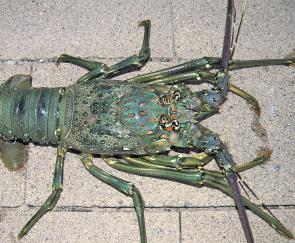They might not yet be at their peak, but these next months should see the great tailor fishing for which Fraser Island is known. They have been improving steadily and should be firing well for the next few months.
Fortunately the years of mass slaughter of tailor are well and truly behind us. Now with a bag limit of 20 fish and a legal minimum size of 35cm, most conservation-minded anglers are happy to play their part.
For most, it is the enjoyment and the challenge that are important, not the number that are taken. Many are opting for chasing the genuine trophy fish, rather than the plentiful 1kg tailor of the dawn and dusk sessions. One successful approach is to use heavy metals like 65g and 85g Raiders, cast wide and worked hard over outer coffee rocks.
An even more reliable way of connecting with really big tailor is to fish the gutters during the night with well presented slabs of tuna, horse mackerel or mullet fillet. Rigs should be well weighted to keep the baits in position for what could be long periods between bites. The main problem that I have with this approach is that dart can make a total mess of a bait in no time at all. Sometimes it is wise to move to a section of beach with features that might not suit the dart.
Another problem with this approach is that sharks of a number of species also like to patrol the same gutters at night and when hooked up can take up a lot of the angler’s time. Although a decent mulloway would not be considered a problem, undersize fish up to 3 kg, of which there are plenty, can also take up time in landing and carefully releasing.
During these next months, dart of excellent quality can be as plentiful as tailor in the classic gutters. Considered by diehard tailor anglers as a nuisance, they produce great sport on light gear for those who are not targeting tailor. Popular baits are pipis and seaworms but many small plastics are proving irresistible. Small curly tail grubs in bright colours like lime green and orange mounted on the lightest possible jighead usually work well.
There are usually plenty of whiting in the shallow ends of tailor gutters but with the noticeable absence of whiting on the beaches so far this year, we cannot be too hopeful. Small numbers of bream, tarwhine and flathead should also turn up in anglers’ catches.
We recently had some interesting and somewhat surprising experiences with crustaceans on the ocean beach. Not the common paddler crabs off the beach or those small colourful crabs of the rocks, these were much larger. It started when one of the boys came up to the house with a mud crab, a very feisty mud crab, in a bucket. Once everyone had made inspections and were convinced that this was not one creature to tangle with, this large female was returned to the ocean.
I had been aware that female mud crabs return to the ocean to spawn as this heavily berried girl demonstrated, but this was a first for our party.
Within the next two days, two more large female crabs were caught on lines baited with sea worm then released. On the following evening while fishing over coffee rocks, I felt what started off as a snag, but when it started to come with a little erratic movement, my initial reaction was that yet another muddie was about to hit the beach. Just as I was hurrying the ‘muddie’ ashore, hoping that she would free herself, my attitude changed completely as a very acceptable painted crayfish complained bitterly about this sudden intrusion on his or her lifestyle. This was one crustacean that was going home to the pot. Crayfish are relatively common amongst the offshore coffee rocks, as some skindivers know well, but line catches are fairly rare these days.
In Hervey Bay, diver whiting have made a late start but should be well settled into their usual haunts by this month. The most productive areas should be wide of Point Vernon, Gatakers Bay and Dundowran, as well as south of Round Island, the western side of Woody Island and between the Picnic Islands and River Heads. July should also see the peak of the bream season as fish seek the highly oxygenated tide rips over the points of the bay islands as well as Point Vernon, Gatakers Bay, and at River Heads.
The shallow reefs have become quiet as water temperatures drop. The deeper reefs and ledges like the Artificial Reef, Channel Hole, Bogimbah and Moon ledges are still working for mixed reef species. Snapper have been taken between the wrecks at the Artificial Reef as well as Moon Ledge. Successful anglers are working live herrings and yellowtail or drifting cut baits of fresh mullet or yellowtail pike.
As I write, excellent reports are still coming in from the northern parts of the bay as far as Rooney Point. Longtail, mac and yellowfin tuna as well as large school mackerel are still feeding ravenously on small baitfish. Most are being released. We have been keeping the odd longtail or yellowfin tuna for the table. These are exceptional fare, particularly as sashimi. Most of the boats making the journey have been hoping for snapper, confidently expected by those in the know at the next full moon. So far bottom fishing the flat slatey reefs has produced a few snapper and javelin.
Reads: 1377
The ‘muddie’ that didn’t go back. This painted crayfish was a welcomed catch.




